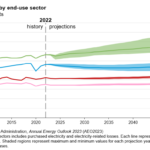Inflation reduction is a crucial goal for any economy as it helps to maintain stable prices and enhance purchasing power. To achieve this goal, mastering essential strategies is paramount. This article highlights key strategies that can effectively combat inflation and ensure economic stability. Inflation reduction is a crucial goal for any economy. Inflation can be defined as the sustained increase in the general price level of goods and services in an economy over a period of time. It erodes the purchasing power of consumers, reduces the value of savings, increases uncertainty, and can have detrimental effects on overall economic stability.
There are several reasons why reducing inflation is important. First and foremost, inflation undermines the purchasing power of individuals and households. When prices rise, people need to spend more money to buy the same amount of goods and services. This leads to a decrease in real wages and disposable income, making it harder for individuals to afford the basic necessities of life. Additionally, inflation can lead to an increase in income inequality as individuals with fixed incomes, such as pensioners, suffer the most.
Furthermore, inflation can have negative effects on savings and investments. When inflation is high, the real value of money decreases, making it less attractive to save or invest. This can discourage individuals and businesses from saving for the future or investing in productive ventures, leading to a slowdown in economic growth. It also creates uncertainty as people are unsure about the future purchasing power of their money, which can hinder long-term planning and investment decisions.
Inflation also affects the competitiveness of a country’s exports. When domestic prices rise faster than those of trading partners, the cost of production increases, making exports more expensive relative to foreign goods. This can lead to a decline in exports and a loss of market share, negatively impacting the economy’s trade balance and reducing overall economic growth.
To reduce inflation, central banks and governments employ various monetary and fiscal policies. Central banks, through monetary policy, can control inflation by adjusting interest rates, open market operations, and reserve requirements. Higher interest rates can reduce consumer spending and business investments, thus curbing the demand for goods and services and lowering inflationary pressures. Similarly, governments can use fiscal policy, such as reducing government spending or increasing taxes, to slow down aggregate demand and reduce inflationary pressures.
It is important to note that reducing inflation should be done in a gradual and cautious manner. Abruptly reducing inflation can lead to negative consequences, such as a significant increase in unemployment or a sharp decline in economic activity. Therefore, policymakers need to strike a balance between stabilizing prices and ensuring sustainable economic growth.
In conclusion, reducing inflation is a crucial goal for any economy. It helps maintain the purchasing power of individuals, encourages savings and investments, enhances the competitiveness of exports, and promotes overall economic stability. By implementing appropriate monetary and fiscal policies, policymakers can effectively reduce inflation and create an environment of stable prices and sustainable growth.
- Monetary Policy:
The central bank plays a crucial role in managing inflation through its monetary policy tools. By adjusting interest rates, the central bank can influence borrowing costs, which in turn impacts consumer spending and investment. The central bank can also control the money supply to curb inflationary pressures. - Fiscal Policy:
Government spending and taxation policies have a direct impact on inflation. By managing fiscal deficits, governments can keep inflation in check. Effective fiscal policies include reducing unnecessary expenditures, implementing tax reforms, and promoting savings and investments. - Structural Reforms:
Structural reforms are vital in addressing the root causes of inflation. These reforms may include deregulation, privatization, improving labor market flexibility, promoting competition, and enhancing productivity. Such measures can increase efficiency, reduce prices, and alleviate inflationary pressures. - Supply-Side Policies:
Supply-side policies focus on improving the production and supply of goods and services. These measures can include investing in infrastructure, facilitating business growth, providing incentives for research and development, and enhancing education and skills training. By increasing the potential output of the economy, supply-side policies can help mitigate inflationary pressures. - Price Stability Targets:
Maintaining price stability is a crucial objective in reducing inflation. Central banks often set explicit targets for inflation rates, typically in terms of annual percentage increases. By committing to these targets, policymakers can promote certainty and anchor inflation expectations, which can effectively curb inflation. - Exchange Rate Management:
A well-managed exchange rate can help reduce inflationary pressures, especially in import-dependent economies. By adjusting the value of the domestic currency, authorities can influence the cost of imported goods and services. A stable exchange rate promotes price stability and reduces the risk of inflationary shocks. - Inflation Monitoring and Forecasting:
Accurate monitoring and forecasting of inflation trends are essential for policymaking. Central banks and other relevant institutions regularly collect and analyze economic data to gauge inflationary pressures. This data guides policymakers in making informed decisions and implementing timely interventions to address inflation concerns. - Public Awareness and Education:
Raising public awareness about the detrimental effects of inflation is crucial. Governments and central banks can educate citizens about the causes and consequences of inflation, promoting responsible financial behavior, and encouraging long-term planning. Increased understanding of inflation aids in curbing excessive spending and promotes savings.
The mastering inflation reduction requires a comprehensive approach that incorporates monetary and fiscal policies, structural reforms, supply-side measures, stable exchange rate management, price stability targets, inflation monitoring, and public awareness. By implementing these essential strategies, policymakers can effectively combat inflation, promote economic stability, and safeguard the purchasing power of individuals and businesses alike.















Leave a comment